 W
WA meromictic lake is a lake which has layers of water that do not intermix. In ordinary, holomictic lakes, at least once each year, there is a physical mixing of the surface and the deep waters.
 W
WLake Bogoria is a saline, alkaline lake that lies in a volcanic region in a half-graben basin south of Lake Baringo, Kenya, a little north of the equator. Lake Bogoria, like Lake Nakuru, Lake Elementeita, and Lake Magadi further south in the Rift Valley, and Lake Logipi to the north, is home at times to one of the world's largest populations of lesser flamingos. The lake is a Ramsar site and Lake Bogoria National Reserve has been a protected National Reserve since November 29, 1973. Lake Bogoria is shallow, and is about 34 km long by 3.5 km wide, with a drainage basin of 700 km2. It is Located in Baringo County.
 W
WBrownie Lake is a lake in Hennepin County, Minnesota, and within the city limits of Minneapolis. It is the northernmost lake in the Minneapolis Chain of Lakes. It is within Brownie Lake Park, and administered by the Minneapolis Park and Recreation Board (MPRB).
 W
WLake Cadagno is a meromictic lake in the Piora valley, Switzerland. As one of a few meromictic lakes in Europe, it is the object of numerous scientific studies. The Piora valley - located in the Saint-Gotthard Massif in the Southern part of Switzerland near Airolo at an altitude of 1921 m above sea level - is a landlocked alpine valley whose scientific value has been recognized for more than two centuries. In the past, the lake was used as a reservoir.
 W
WClark Reservation State Park is a state park in Onondaga County, New York. The park is in Jamesville, NY, in the Town of DeWitt, south of Syracuse. It was the site of a large waterfall formed by melting glacial ice at the end of the last Ice Age; the plunge basin at the base of the old falls is now a small lake. James Macfarlane described the area in 1879, "On approaching the lake from the turnpike on the south side, the tourist is startled at finding himself, without any notice, on the brink of a yawning gulf, precisely like that of the Niagara River below the Falls, and nearly as deep." Clark Reservation is also noted for its many ferns; it harbors the largest population in the U.S. of American hart's tongue, which is so rare that it was declared endangered in the U.S. in 1989.
 W
WClear Lake is a marine lake located on Eil Malk island in Palau. Eil Malk is part of the Rock Islands, a group of small, rocky, mostly uninhabited islands in Palau's Southern Lagoon, between Koror and Peleliu. There are about 70 other marine lakes located throughout the Rock Islands. Clear Lake is notable for endemic subspecies of golden jellyfish and is one of five marine lakes in Palau used for several scientific researches in evolutionary biology the other lakes being Jellyfish Lake, Goby Lake, Uet era Ngermeuangel, Uet era Ongael.
 W
WCrawford Lake Conservation Area is a conservation area owned and operated by Conservation Halton near the community of Campbellville in Milton, Halton, Ontario, Canada. It is categorized as a regional environmentally sensitive area, an Ontario Area of Natural and Scientific Interest, and part of the Niagara Escarpment world biosphere reserve. The conservation area contains Crawford Lake, a reconstructed Iroquoian village, and several hiking trails.
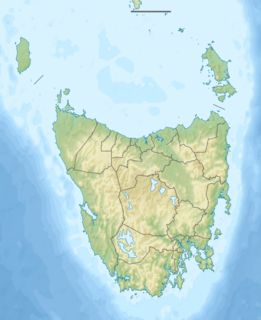 W
WLake Fidler is a meromictic lake beside the Gordon River in the Tasmanian Wilderness World Heritage Area of the west coast of Tasmania, Australia. The lake has a layer of fresh water overlying an anoxic salt water layer. The meromictic lakes and ponds of the Gordon River were discovered by D. A. Hodgson and Professor Peter Tyler.
 W
WLake Fryxell is a frozen lake 4.5 kilometres (2.8 mi) long, between Canada Glacier and Commonwealth Glaciers at the lower end of Taylor Valley in Victoria Land, Antarctica. It was mapped in the early 1900s and named during Operation Deep Freeze in the 1950s. There are several forms of algae living in the waters and a weather station located at the lake.
 W
WGoby Lake is a marine lake located on Koror island in Palau. There are about 70 other marine lakes located throughout the Rock Islands and Koror. Goby Lake is notable for endemic subspecies of golden jellyfish and is one of five marine lakes in Palau used for several scientific researches in evolutionary biology the other lakes being Jellyfish Lake, Clear Lake (Palau), Uet era Ngermeuangel, Uet era Ongael.
 W
WGreen Lake is the larger of the two lakes in Green Lakes State Park, which lies about 9 miles (14 km) east of downtown Syracuse in Onondaga County, New York. Round Lake is the smaller lake located west of Green Lake. Both lakes are meromictic, which means no seasonal mixing of surface and bottom waters occurs. Meromictic lakes are fairly rare; they have been extensively studied, in part because their sediments can preserve a historical record extending back thousands of years, and because of the euxinic conditions which can form in the deep water.
 W
WJellyfish Lake is a marine lake located on Eil Malk island in Palau. Eil Malk is part of the Rock Islands, a group of small, rocky, mostly uninhabited islands in Palau's Southern Lagoon, between Koror and Peleliu. There are about 70 other marine lakes located throughout the Rock Islands. Millions of golden jellyfish migrate horizontally across the lake daily.
 W
WLake Kivu is one of the African Great Lakes. It lies on the border between the Democratic Republic of the Congo and Rwanda, and is in the Albertine Rift, the western branch of the East African Rift. Lake Kivu empties into the Ruzizi River, which flows southwards into Lake Tanganyika.
 W
WMahoney Lake is a meromictic saline lake located near Okanagan Falls in British Columbia, Canada. It was established as an ecological reserve to preserve a southern interior saline lake, possessing unique limnological features in 1972. It has a unique layering, where the very bottom of the lake is very salt rich and contains hydrogen sulphide (H2S), which facilitates the growth of the purple sulphur bacteria in the layer above it, where the bacteria has just enough light to grow. The upper layer of the lake consists of a mixing layer of fresh water. Mahoney Lake is alkaline because it features no inflow or outflow of water. The lake also contains very low levels of oxygen and an approximate pH of 7.5-9.0. The surface area of the lake is 18ha and the surface area of the land is 21ha, with combined total of 21 ha.
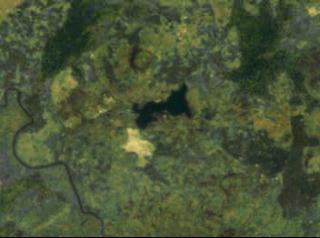 W
WLake Monoun is a lake in West Province, Cameroon, that lies in the Oku Volcanic Field 5.58°N 10.59°E. On August 15, 1984, the lake exploded in a limnic eruption, which resulted in the release of a large amount of carbon dioxide that killed 37 people. At first, the cause of the deaths was a mystery, and causes such as terrorism were suspected. Further investigation and a similar event two years later at Lake Nyos led to the currently accepted explanation.
 W
WThe Mystic Lakes, consisting of Upper Mystic Lake and Lower Mystic Lake, are closely linked bodies of water in the northwestern suburbs of Boston, Massachusetts.
 W
WLake Nyos is a crater lake in the Northwest Region of Cameroon, located about 315 km (196 mi) northwest of Yaoundé, the capital. Nyos is a deep lake high on the flank of an inactive volcano in the Oku volcanic plain along the Cameroon line of volcanic activity. A volcanic dam impounds the lake waters.
 W
WOrganic Lake is a lake in the Vestfold Hills in eastern Antarctica. It was formed 6,000 years ago when sea levels were higher; it is isolated, rather shallow 7.5 metres (25 ft), meromictic, a few hundred meters in diameter and has extremely salty water. It has the highest recorded concentration of dimethyl sulfide in any natural body of water.
 W
WLac Pavin is a meromictic crater lake located in the Puy-de-Dôme department of France, between Besse-en-Chandesse and Super-Besse. It gives its name to a cheese: Pavin cheese.
 W
WPink Lake is a meromictic lake located in Gatineau Park, Quebec, Canada. The surface of the waters are a deep green during the month of August and September due to the abundance of algae in the water. The lake is in danger of eutrophication due to human activities. Park management forbids swimming in the lake, walking domestic animals near it, straying from the wooden boardwalk for sight-seers, and throwing stones into the lake.
 W
WRedoubt Lake, or Kunaa Shak Áayi, is a long, narrow lake on Baranof Island, near Sitka, Alaska. It is located in a glacially-carved valley in Tongass National Forest. It was named Ozero Glubokoye, meaning "deep lake", in 1809 by the Russian navigator Ivan Vasilyev.
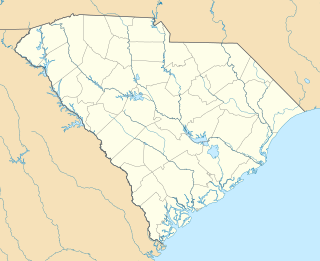 W
WThe Ridgeway mine was a gold and silver open-pit mine near Ridgeway, South Carolina. In its eleven years of operation between 1988 and 1999 it produced 1,500,000 ounces of gold and 900,000 ounces of silver. The mine's two ore bodies are part of the gold-rich Carolina Slate Belt rock package that runs through the upstate Piedmont foothills. The operator of the mine, the Ridgeway Mining Company, is a subdivision of Kennecott Minerals. Kennecott is a subdivision of Rio Tinto which is one of the world's largest mining companies.
 W
WRound Lake National Natural Landmark lies within Green Lakes State Park, which lies a few miles east of the city of Syracuse, New York and adjoining the village of Fayetteville. Round Lake itself and the adjoining 59 acres (24 ha) of old-growth forest were designated a National Natural Landmark in 1973 by the U.S. Department of the Interior. Hubert W. Vogelmann, a professor of botany at the University of Vermont, wrote the evaluation to the National Park Service that concurred with the recommendation of National Natural Landmark status for the region around Round Lake. Vogelmann's evaluation noted the "outstanding virgin mesophytic forest" adjoining Round Lake on its southwestern side; this text became part of the citation when the landmark was created. Vogelmann also noted Round Lake's importance as an extremely rare, "meromictic" lake. It shares this distinction with Green Lake, which lies a few hundred meters to the east.
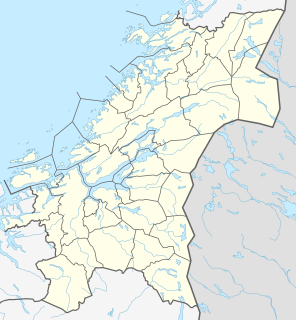 W
WSalvatnet is a lake in the municipalities of Namsos and Nærøysund in Trøndelag county, Norway. With its deepest depth of 464 metres (1,522 ft), it is Norway's and Europe's second-deepest lake, after Hornindalsvatnet. Alternate sources give the depth as either 464 metres (1,522 ft) or 482 metres (1,581 ft) at the deepest point. The lake sits very close to the ocean, about 9 metres (30 ft) above sea level at the surface and reaches to a depth of 455 metres (1,493 ft) below sea level. It is a very large lake with an area of 44.77 square kilometres (17.29 sq mi), a volume of 6.87 cubic kilometres (1.65 cu mi), and a shoreline that is 105.61 kilometres (65.62 mi) around.
 W
WLake Shira is a meromictic lake, located in the Republic of Khakassia, Russia. The lake covers an area of 39.5 km2 (15.3 sq mi) in a steppe landscape in the Minusinsk Hollow, a relatively flat intermountain area 160 km northwest of the city of Abakan. The village for which it is named, Shira, is 12 kilometers (7.5 mi) to the west. The southern and western shores feature beaches popular for local recreation, and spas that take advantage of the mineral water. Lake Shira is a salt lake with a high magnesium content. It has one small river providing inflow, but no outflow, although geographically the lake is in the Yenisei River basin. The northern shore is protected by the Khakasski Nature Reserve.
 W
WLake Shunet is a meromictic lake near the selo of Shira in the Republic of Khakassia, Russia. It belongs to the Shirin group of lakes. It is located 7 km south of the Lake Shira, in a deep basin, at around 390 m above sea level.
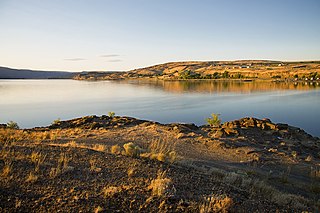 W
WSoap Lake is a meromictic soda lake in the town of Soap Lake, Washington formed by the Missoula Floods at the foot of the Grand Coulee. The lake gets its name from the naturally occurring foam that gives its water a soapy appearance, and because the lake's mineral-rich waters have a slick, soapy feel. The lake is approximately 2 square miles (5.2 km2) in area and 70 feet (21 m) deep.
 W
WThe Soda Lakes are two lakes located northwest of Fallon, Nevada. They occupy two basaltic maar volcano craters which may have erupted in the last 1500 years. The larger lake, called Soda Lake or Big Soda Lake, is somewhat elongated, stretching 2 kilometers (1.2 mi) in length. The smaller one, Little Soda Lake, is 200 meters (660 ft) across. Considered to be a single volcano, the combined craters are young enough that future activity can't be ruled out. A geothermal power plant is located on the northeast flank of the volcano.
 W
WLake Vanda is a lake in Wright Valley, Victoria Land, Ross Dependency, Antarctica. The lake is 5 km long and has a maximum depth of 69 m. On its shore, New Zealand maintained Vanda Station from 1968 to 1995. Lake Vanda is a hypersaline lake with a salinity more than ten times that of seawater and more than the salinity of the Dead Sea. Lake Vanda is also meromictic, which means that the deeper waters of the lake don't mix with the shallower waters. There are three distinct layers of water ranging in temperature from 23 °C (73 °F) on the bottom to the middle layer of 7 °C (45 °F) and the upper layer ranges from 4–6 °C (39–43 °F). It is only one of the many saline lakes in the ice-free valleys of the Transantarctic Mountains. The longest river of Antarctica, Onyx River, flows West, inland, into Lake Vanda. There is a meteorological station at the mouth of the river.
 W
WZigetangcuo Lake is a crenogenic meromictic lake in the North Tibetan Plateau. It is located in Nagqu Prefecture, north of Dongqiao. It has an area of 18,700 ha at an altitude of 4560 meters. It is the meromictic lake with the highest known altitude.